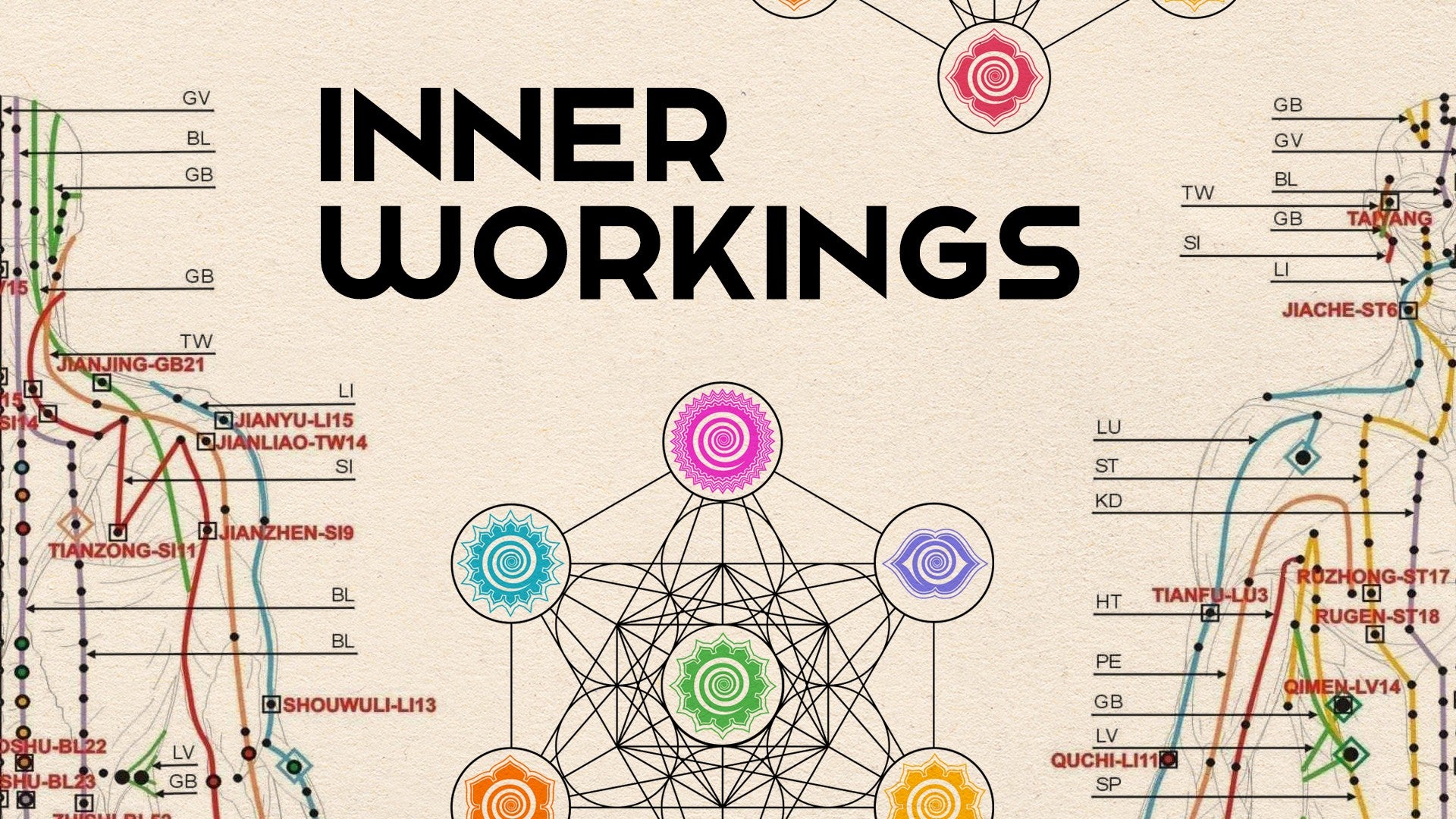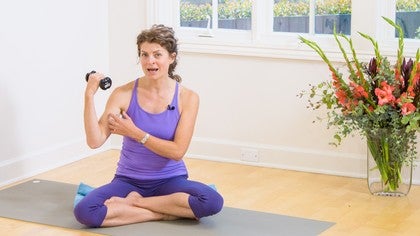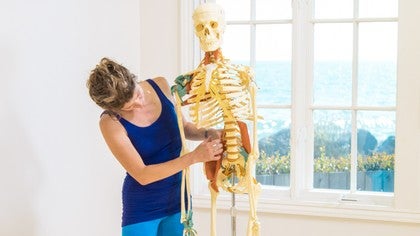Description
About This Video
Transcript
Read Full Transcript
Hi. I want to talk to you about your muscles. Specifically, I want to talk about eccentric and concentric contraction. So, in the simplest sense, when you pick something up, you need to close this joint. To bring the weight toward me, I have to close this joint. And to do that, this muscle thickens and concentrates and closes this joint. That's concentric contraction. It concentrates the muscle. When I want to put the weight down, something else happens. And it's not just the slow turning off of flexion, flexion being an action that closes. It's called eccentric contraction. There it is. It's happening. And it stops when the joint is all the way open. And to do that, to do eccentric contraction, which opens a joint, the muscle thins and expands. And the way that that actually happens with muscle fibers is that they have these sort of, their cells can grab onto each other. And they can also slide. So, when you are experiencing concentric contraction, the cells of the muscles, the muscle fibers themselves, grab and progressively pull themselves together so that the muscle becomes thicker and not as pliable, stronger. And when you are experiencing eccentric contraction, the fibers release. They get slidey and they let go of each other until the muscle is thinner and more pliable and expanded. What's really fascinating for me is that that action of sliding and binding is also what activates the tissue on a molecular level. So, the muscles contain all of these molecular structures called sarcomeres. And they do the same thing. They concentrate by grabbing and condensing. And they expand by sliding and releasing.
So, that's happening at the tiniest scale inside your muscles. And it's happening in the muscle fibers. And it's happening over an entire joint also. The muscles with other muscles are surrounding each other and condensing. The really cool thing for me about all of this is that the same feeling in the body that produces eccentric contraction produces it in the entire body and in the cells of the entire body on all levels. So, your ability to produce concentric contraction, flexion, and eccentric contraction is through the entire system. That's the kind of control you have. So, we can work, you know, folding and opening a single joint. But we can also work with individual tissues around a joint to help create better balance inside the joint. And that's the place where eccentric and concentric contraction come together is to create balance in tissues. And the balance can be the balance of weight inside a joint so that when I'm carrying the weight of my body through my elbow joint, I can have it be not too much on the inside or too much on the outside. Or I can find a way to have the actions of the muscles be balanced, a balance of eccentric and concentric contraction. Developmentally, we come to these whole self-actions through our desires. The pattern of concentric contraction is the pattern of pull. It's how you get what you want from the world. It's also how you move your body in space toward what you want, the pull. Eccentric contraction happens in the push, which again is a way to move through space. Very often babies push themselves backwards before they learn how to pull themselves forward. So, the push is eccentric. And the reach is also eccentric. How do we reach out of ourselves to get the things we want in the world? It comes before the pull. You have to reach out so that you can pull toward. This is to say that these different kinds of molecular activity are feelings in our bodies. And when we're practicing yoga, we have the opportunity to notice how we have access to our tissues through our feelings. So, if in a particular tissue we're bumping into a wall, it doesn't stretch, it feels so tight, the experience of eccentric contraction is something that we can explore to provide better balance in that tissue. And if a particular joint feels not totally protected because there's so much flexibility around that joint, we see it a lot in hyperextension, for example, we can explore the feeling of concentric contraction to offer better support to that joint. Which is to say that there's always a place to work. There's always a way to work in every posture, in every practice.
Inner Workings: Devon Riley
Comments
You need to be a subscriber to post a comment.
Please Log In or Create an Account to start your free trial.











